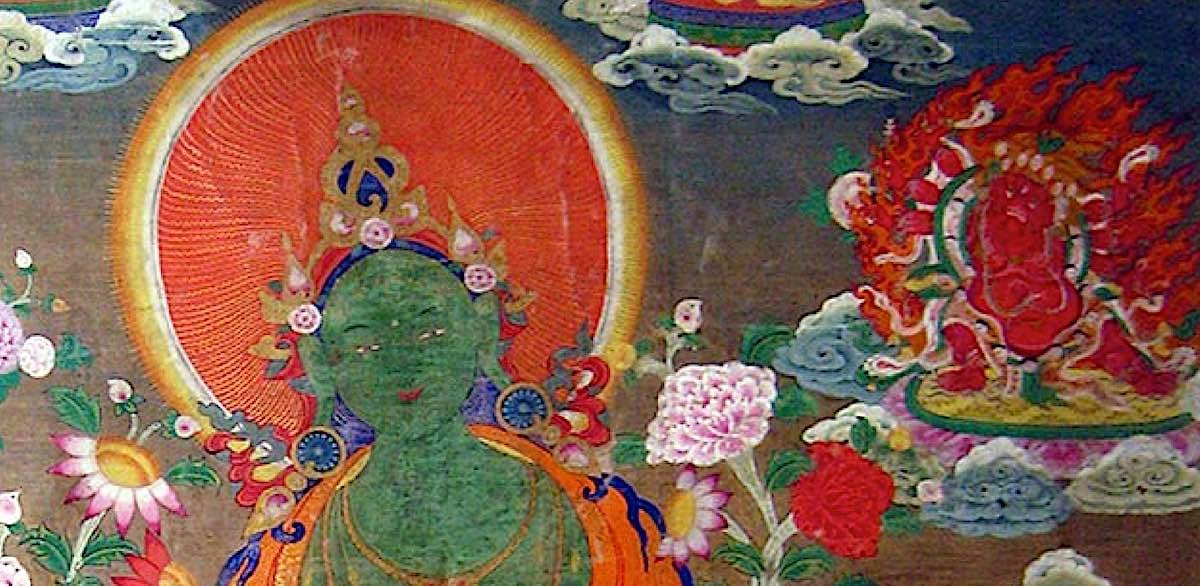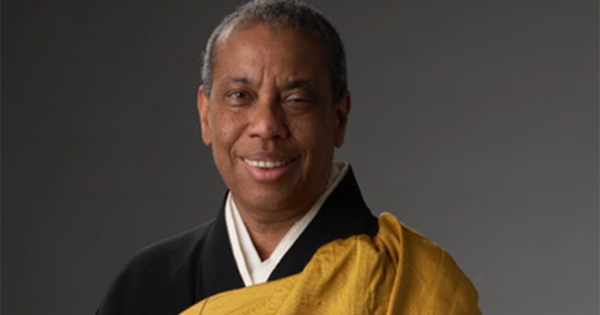Cooked with Love
Arepas have been eaten in South America since pre-Columbian times. For Mariana Restrepo, they’re a reminder of all the hands that have fed and shaped her. The post Cooked with Love appeared first on Lions Roar.
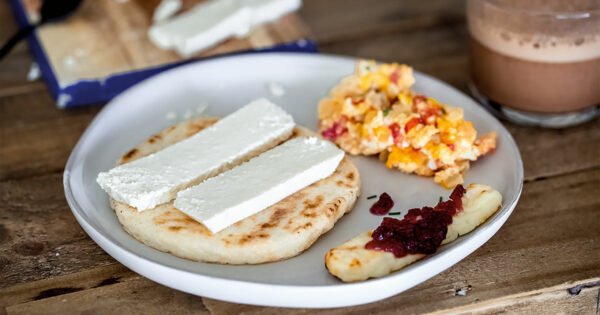
Arepas have been eaten in South America since pre-Columbian times. For Mariana Restrepo, they’re a reminder of all the hands that have fed and shaped her.
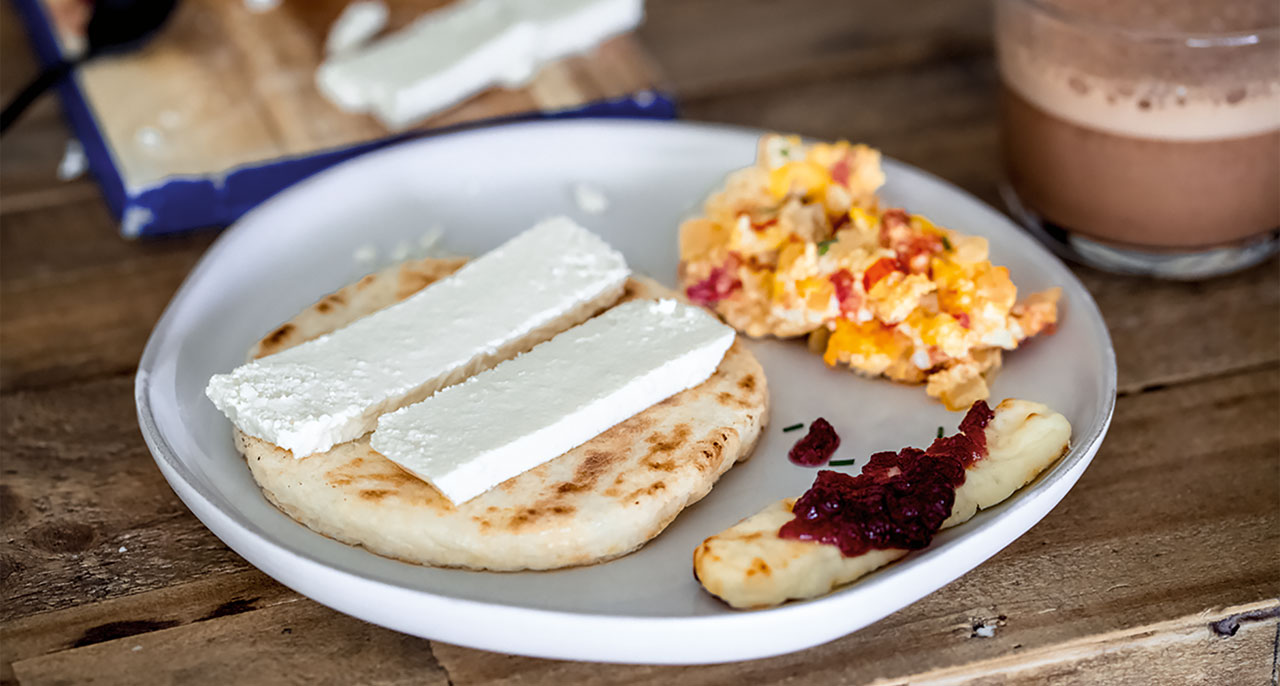
Photo by Isabel Byfield / Tastyaz.com
My family doesn’t have any heirloom recipes passed down from generation to generation. I did not learn how to cook from my parents; I learned to cook on my own, mostly out of necessity. I was a young teen when my family immigrated to the United States, and my mother worked long hours, leaving my brother and me to fend for ourselves in terms of meal preparation. Even now, when my mother is craving Colombian food, she asks me to cook it for her. I’m the one teaching her how to make the foods of her own childhood, telling her the stories of how I came to know the recipes.
Sharing food, especially sharing the food I make with others, is a way of allowing myself to be seen.
When I first started cooking, I relied on my memories of watching others cook, combined with my limited understanding of what flavors and spices work together. Later I looked for recipes in magazines, or those printed on food packaging. My favorite recipes were always the ones printed on the backside of condensed-milk labels. As I became more confident in my cooking skills, I developed my own dishes from a medley of different recipes, using what I liked best from each one. My first recipe that my family came to love and request often was arroz con leche, or rice pudding. I started making arroz con leche when I was fifteen, and my recipe evolved as I did. It went from simple and straightforward—rice, milk, and sugar—to a rich brew of rice, condensed milk, cinnamon, and raisins. During my college years, I easily adapted the recipe to my vegan diet, substituting milk with almond milk. Now, I often incorporate my love of Indian flavors, adding a dash of cardamom, perhaps a splash of rose water, and shaved almonds instead of raisins.
While there weren’t family recipes passed down to me, I do recall my maternal grandmother’s cooking. It wasn’t fancy or sophisticated. On the contrary, it was mostly rice, eggs, and lentils. Simple, but always comforting. She loved to make eggs for my brother and me, whether for breakfast, lunch, or dinner. I remember her making very runny eggs, the way I still like them. In my grandmother’s house, eggs were cooked in small frying pans called cacerolas, designed to cook eggs and eggs only. If my grandmother had to cook eggs for the whole family, each egg would be individually prepared and served in its own cacerola. The exception would be huevos pericos, Colombian-style scrambled eggs mixed with chopped green scallions and tomatoes, lightly fried.
But it didn’t matter what type of eggs we were eating, or whatever else we were having for breakfast; our “daily bread” was always arepas, flat, round patties made from maize. Every day started and often ended with an arepa. Arepas were indispensable. When I was a kid, every time we traveled from Colombia to visit relatives in the U.S., we lugged carry-on suitcases filled with only arepas. Those same suitcases would return to Colombia filled with Snickers, Twizzlers, M&Ms, and other highly coveted American candy. A fair exchange, I suppose. While relatives far away from Colombia longed for familiar flavors, those back home craved the exotic. I did not understand that then, as I do now. Living in the States, I rate the quality of every city based on the accessibility of good arepas. Even when I attended a traditional three-year Tibetan retreat, I made sure to travel with an arepa grill as well as enough arepas to last me a while.
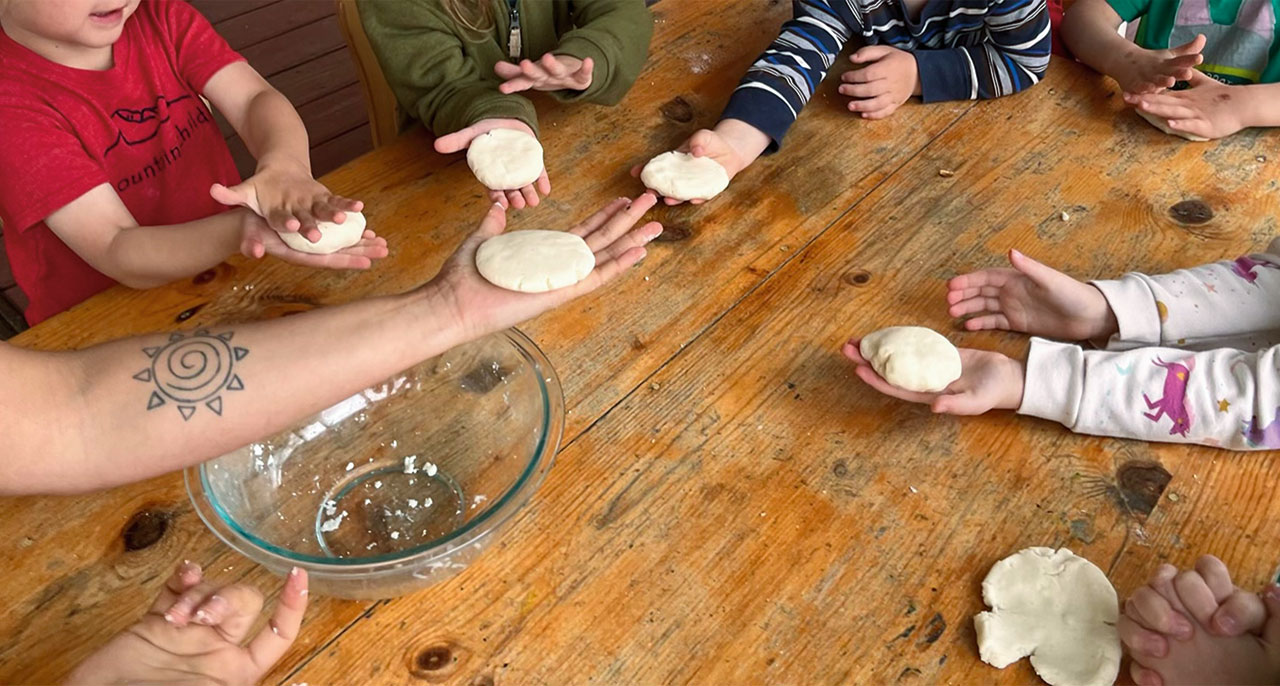
Teaching her son’s class how to make them, Mariana Restrepo reflects: “I’m reminded of my role in passing down the traditions of my people.” Photo courtesy of the author.
A few years back, when I took a Tibetan Buddhist monk of Hungarian heritage to Colombia, my family served arepas every day for breakfast. At the end of the trip, he joked that he had now completed his “Mil-arepa ngondro.” A ngondro is a preparatory practice where one accumulates thousands of mantras, prostrations, etc. Milarepa is one of Tibet’s most famous yogis and a significant figure in the Kagyu lineage of Tibetan Buddhism. So, as you can see, this was a very clever play on words.
Food that brings us comfort does so because of the memories attached to it. I recently went to my son’s preschool to teach his classmates how to make arepas. In preparation, my mother and I premade enough arepas so everyone would have the chance to eat their own. This was the first time I ever made arepas with my mother, and I was the one teaching her how to make them. I went to the preschool dressed in a traditional Colombian chapolera outfit: flowers garlanding my braided hair, a white peasant-style blouse adorned with ribbons, and a long skirt with ruffles that mimic the wings of butterflies fluttering through coffee fields. Teaching my son and his classmates how to prepare arepas, I was reminded of those who have come before me, those who will come after, and my role in passing down the traditions and stories of my people. For me, arepas are a reminder of all the hands that have fed me, all the hands that have shaped me.
Sharing food, especially sharing the food I make with others, is a way of opening myself up, of allowing myself to be seen. It’s a form of vulnerability. For me, cooking is a way of caring for those I love. And while I aspire to love all beings equally, my closest friends will tell you my tres leches cake is exclusively reserved for those I hold dearest to my heart.

 Tfoso
Tfoso 










